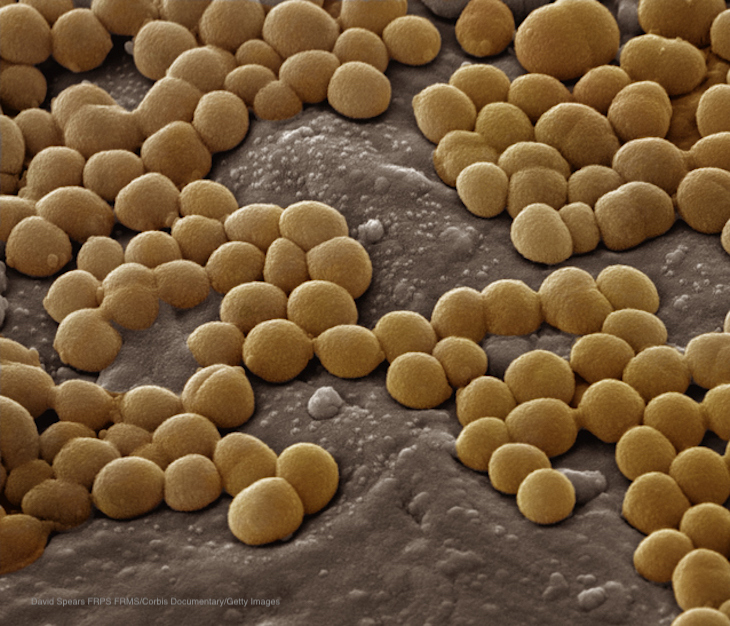A Staphylococcus aureus food poisoning infection is one of the most common foodborne-diseases worldwide, and one of the most common reported in the United States, with about 241,000 people sickened every year, leading to about 10,000 hospitalizations. So how do you know if you have a Staphylococcus aureus infection?

The Staphylococcus aureus bacteria produces a toxin that is called an enterotoxin, which is a toxin that is produced in or affects the intestines. This toxin is very heat stable, which means that even if a food containing the bacteria is heated to a safe final internal temperature, the toxins can remain and make people sick. The toxin is also resistant to freezing and drying.
And the bacteria can grow at a ride range of temperature, pH levels, and sodium chlorine concentrations. It can also survive in dry environments, such as on clothing and surfaces.
Most of these illnesses are caused by improper food handling in the retail industry. But there is documented prevalence of Staphylococcus aureus in many food products, including raw meats sold at the retail level. That means that consumers are susceptible to this infection from food prepared at home.
Staphylococcus aureus foodborne disease is not a reportable condition in this country, which means that the true incidence of these infections could be a lot higher than we know. Other factors that could account for the relatively low incidence of this infection includes misdiagnosis, improper sample collection, the fact that most people do not seek medical attention, and lack of routine surveillance for the bacteria or its enterotoxins.
When you contract this Staphylococcus aureus infection, onset of symptoms is sudden and abrupt. Symptoms include nausea, vomiting, and abdominal cramps with or without diarrhea, along with hyper salivation. Patients can suffer dehydration and hypotension. Symptoms usually start within 30 minutes to 3 hours after eating contaminated food. This illness is not transmitted person-to-person.
The illness is usually self-limiting, meaning that people recover without medical attention, but it can be severe in certain groups, such as infants, the elderly, and anyone who has a compromised immune system.
Methicillin-resistant Staphylococcus aureus (MRSA) is a significant problem in the health care industry in the United States, because about 1.5% of the population is colonized with this resistant strain. However, those infections are spread person-to-person and the infection happens through the skin.
Foods that are implicated in Staphylococcus aureus food poisoning include meats and meat products, egg products, poultry, milk and dairy products, bakery products, especially cream-filled pastry and cakes, sandwich fillings, and salads.
The best way to prevent this infection is to handle food properly. Wash your hands thoroughly with soap and water before you start cooking and before eating. Make sure that food is held below 40°F and above 140°F, avoiding that danger zone where bacteria can multiply easily. Use a food thermometer to make sure that foods are cooked to a safe final internal temperature. And quickly cool down leftovers and make sure that they are refrigerated within two hours of cooking or removal from the refrigerator. This time shrinks to 1 hour if the ambient air temperature is above 90°F.




